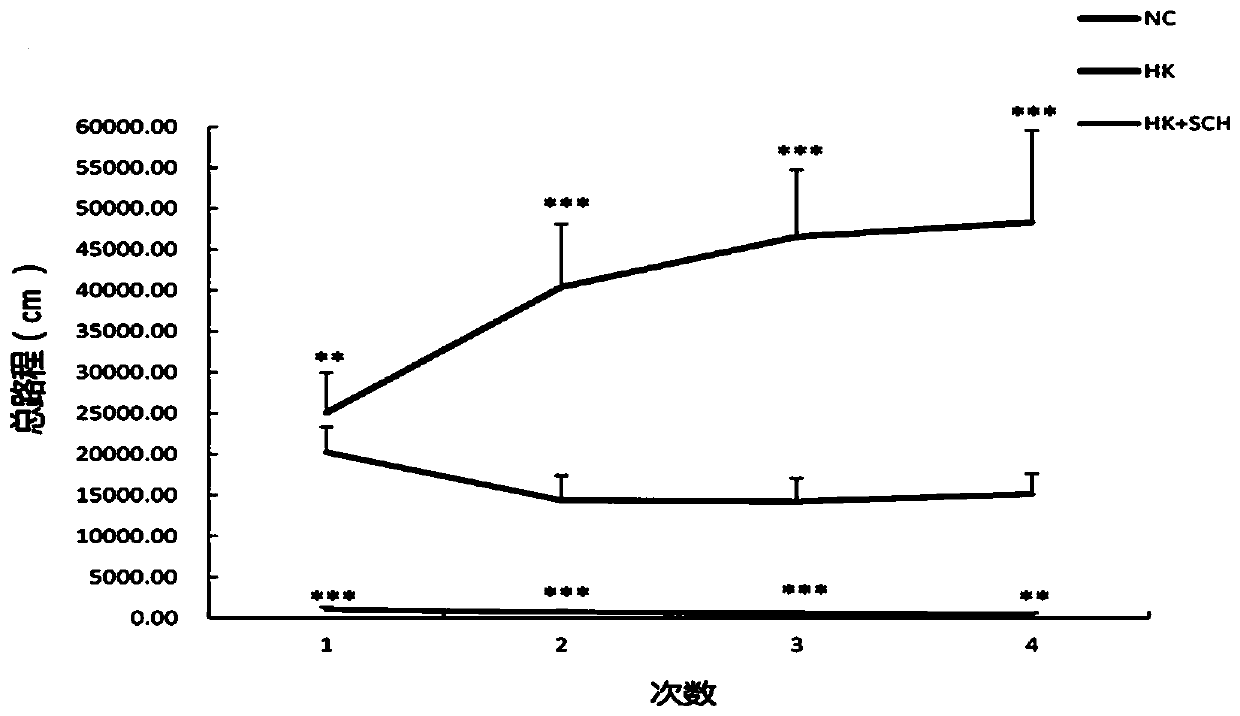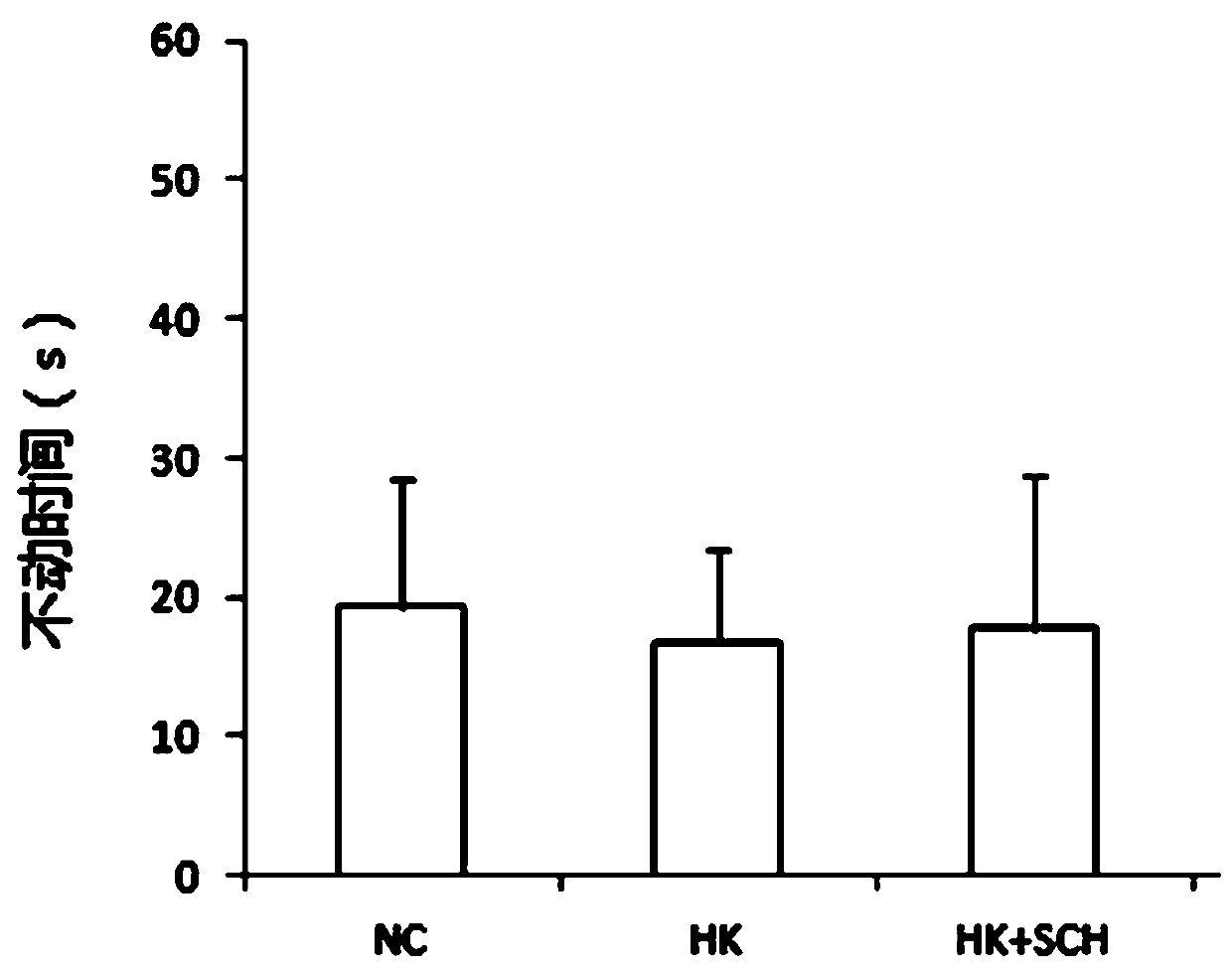Application of dopamine receptor 1 antagonist in preparing drugs for treatment of ketamine-induced schizoid symptoms in mice
A technology for schizophrenia and dopamine is applied in the field of dopamine receptor 1 antagonists, the preparation of drugs for treating schizophrenia induced by ketamine in mice, which can solve the problem of unknown etiology of schizophrenia, and no dopamine receptor 1 antagonist has been found yet. , the lack of biological detection indicators and other problems
- Summary
- Abstract
- Description
- Claims
- Application Information
AI Technical Summary
Problems solved by technology
Method used
Image
Examples
Embodiment
[0031] 1. Animal preparation and drug injection.
[0032] C57BL / 6 mice, male, 8 weeks old, SPF grade, raised in 12 / 12 circadian rhythm, room temperature 20-22°C, adequate diet and food laboratory. Several mice were randomly divided into two groups: normal saline treatment group (NC, negative control) and high-dose ketamine treatment group (HK, high ketamine). The drug treatment of two groups of mice was carried out by intraperitoneal injection, the administration time was 17:00-18:00, and the injection volume of each mouse was 100ul / 10g. Both the normal saline group and the high-dose ketamine group were administered for seven consecutive days. Finally, the final concentration of ketamine in mice was 100 mg / kg.
[0033] After seven days of high-dose ketamine treatment, the mice were intraperitoneally injected with DRD1 receptor antagonist SCH23390 at a final concentration of 5 mg / kg for seven days.
[0034] 2. Behavioral testing.
[0035] 2.1 Open field experiment.
[0036...
PUM
 Login to View More
Login to View More Abstract
Description
Claims
Application Information
 Login to View More
Login to View More - R&D
- Intellectual Property
- Life Sciences
- Materials
- Tech Scout
- Unparalleled Data Quality
- Higher Quality Content
- 60% Fewer Hallucinations
Browse by: Latest US Patents, China's latest patents, Technical Efficacy Thesaurus, Application Domain, Technology Topic, Popular Technical Reports.
© 2025 PatSnap. All rights reserved.Legal|Privacy policy|Modern Slavery Act Transparency Statement|Sitemap|About US| Contact US: help@patsnap.com



